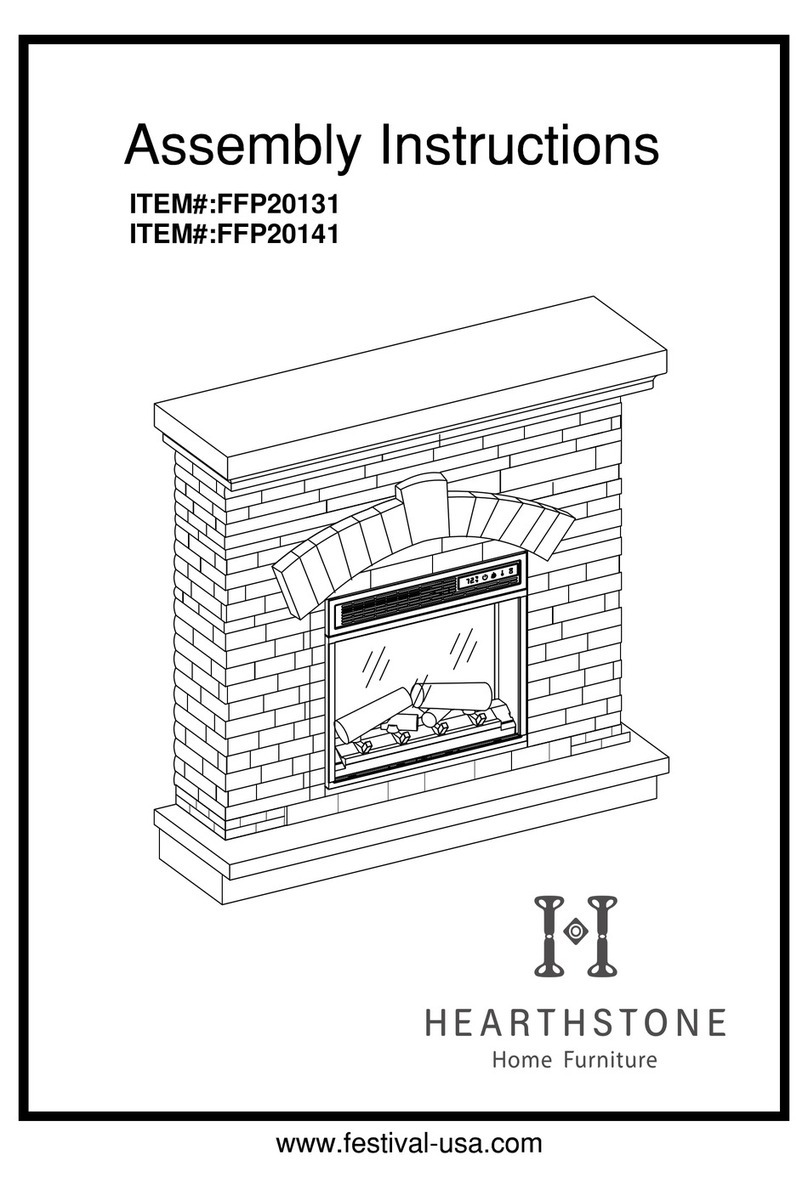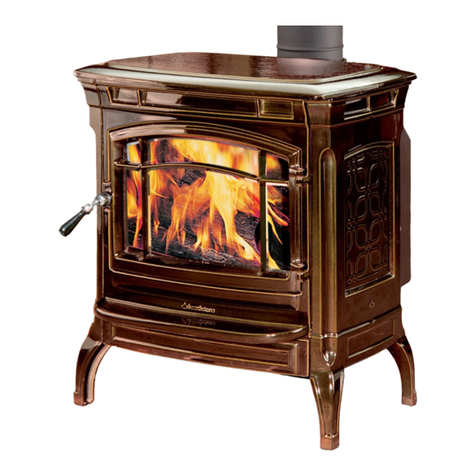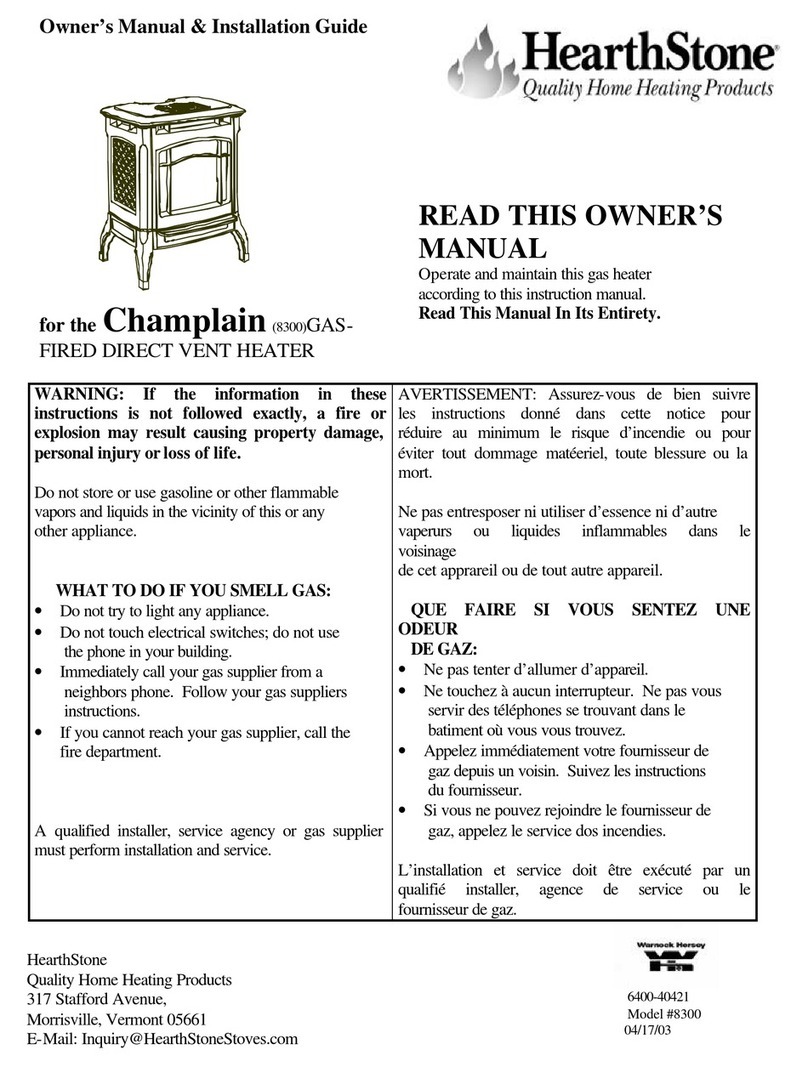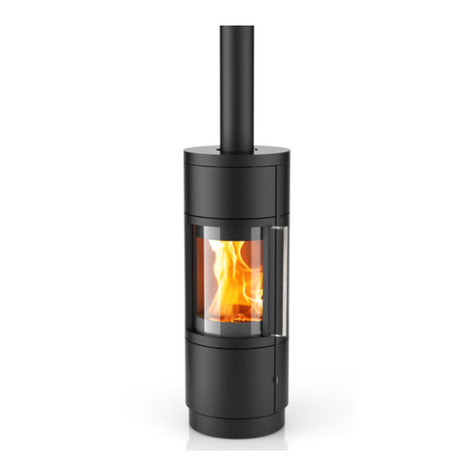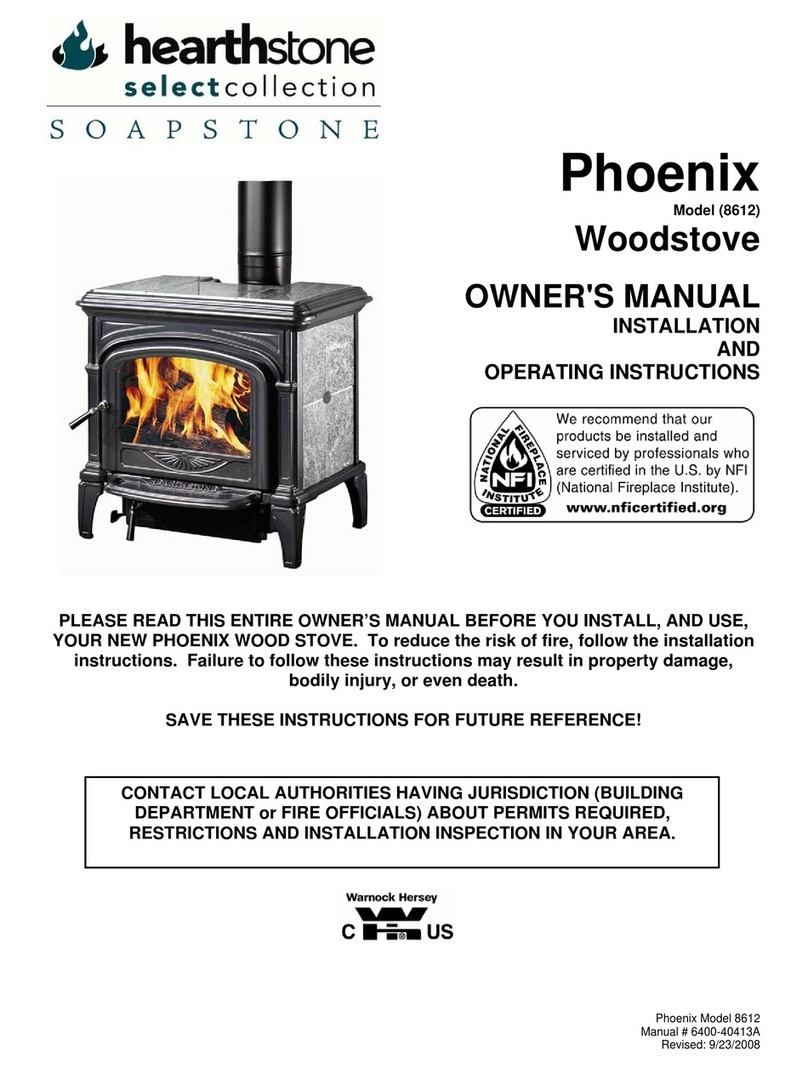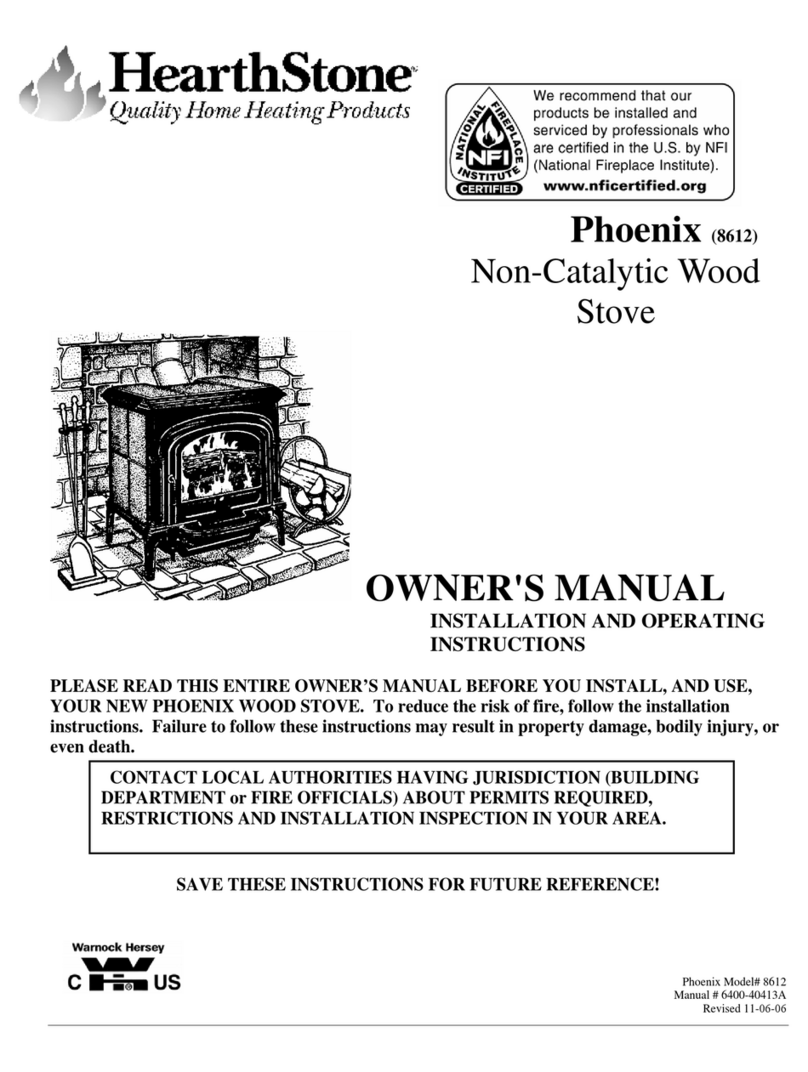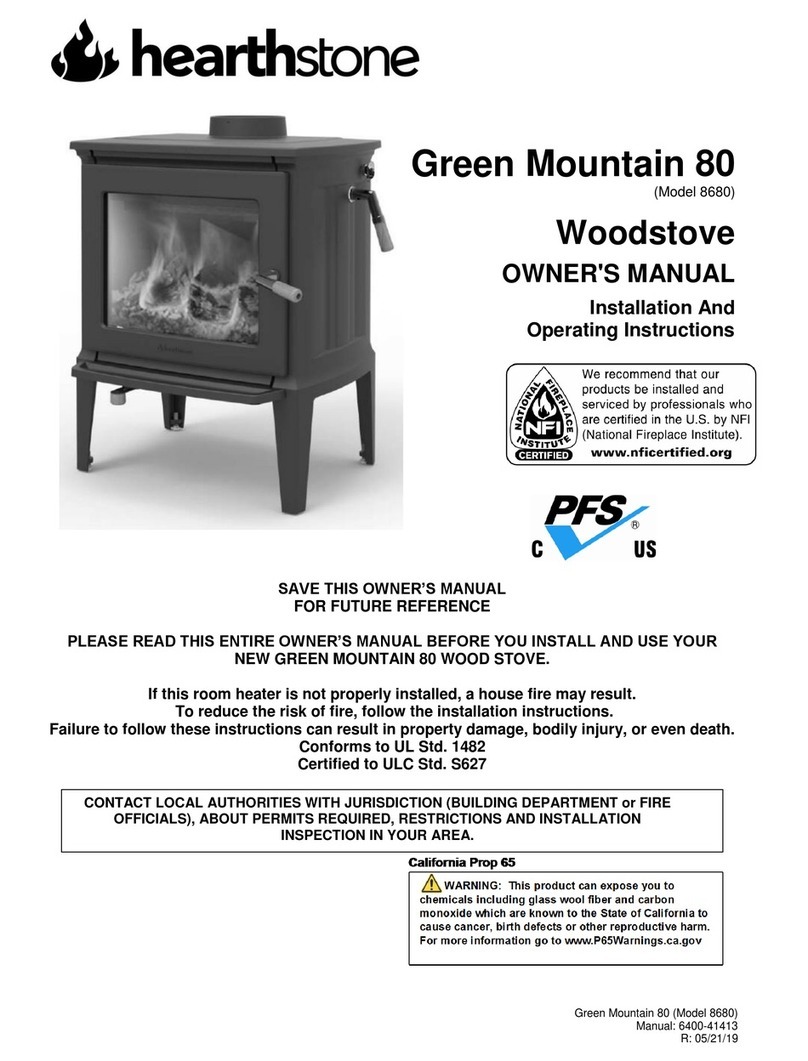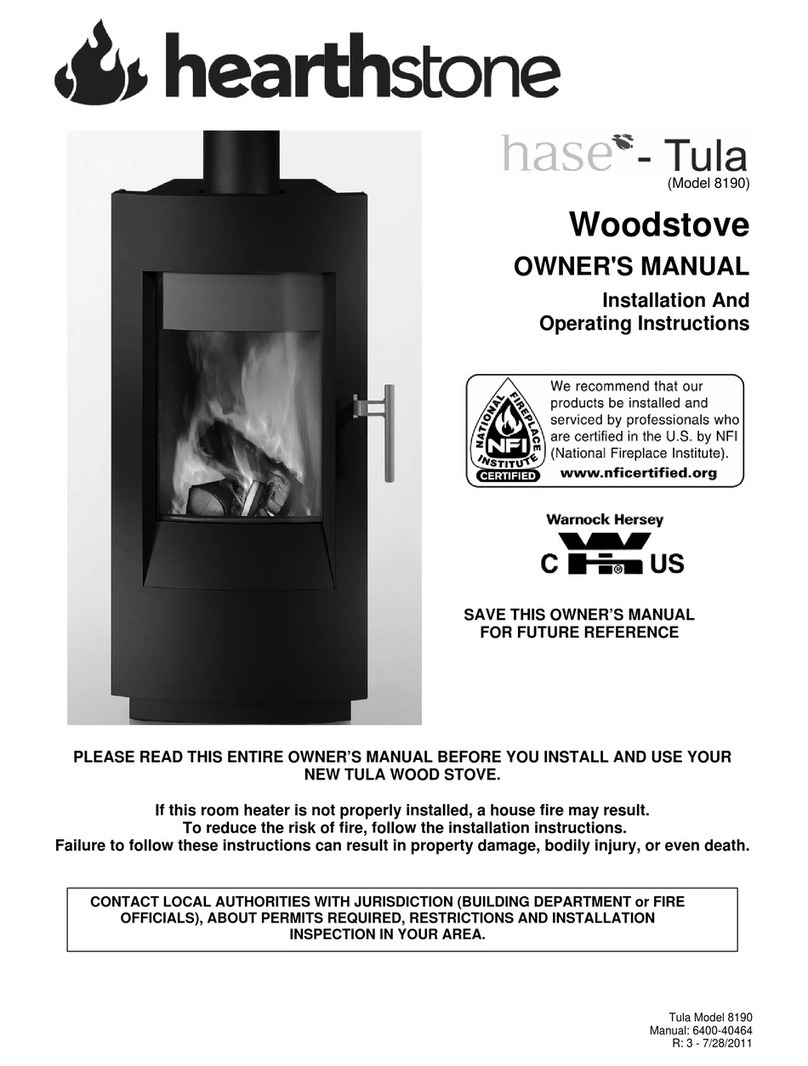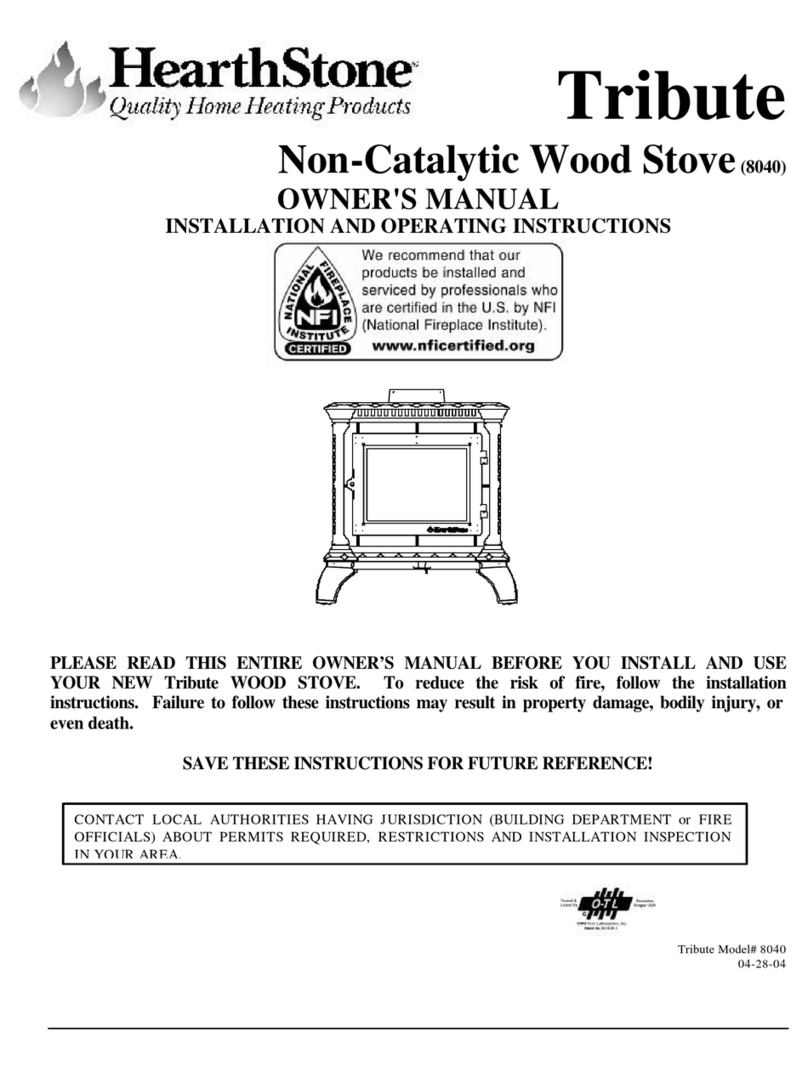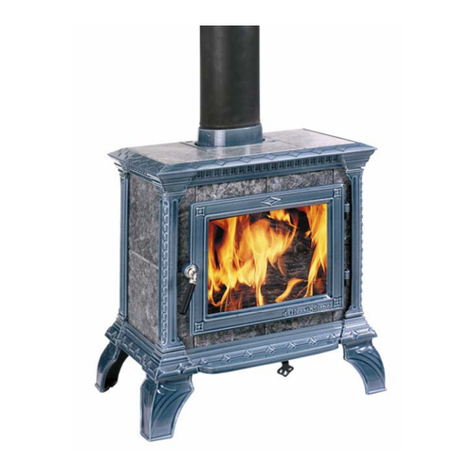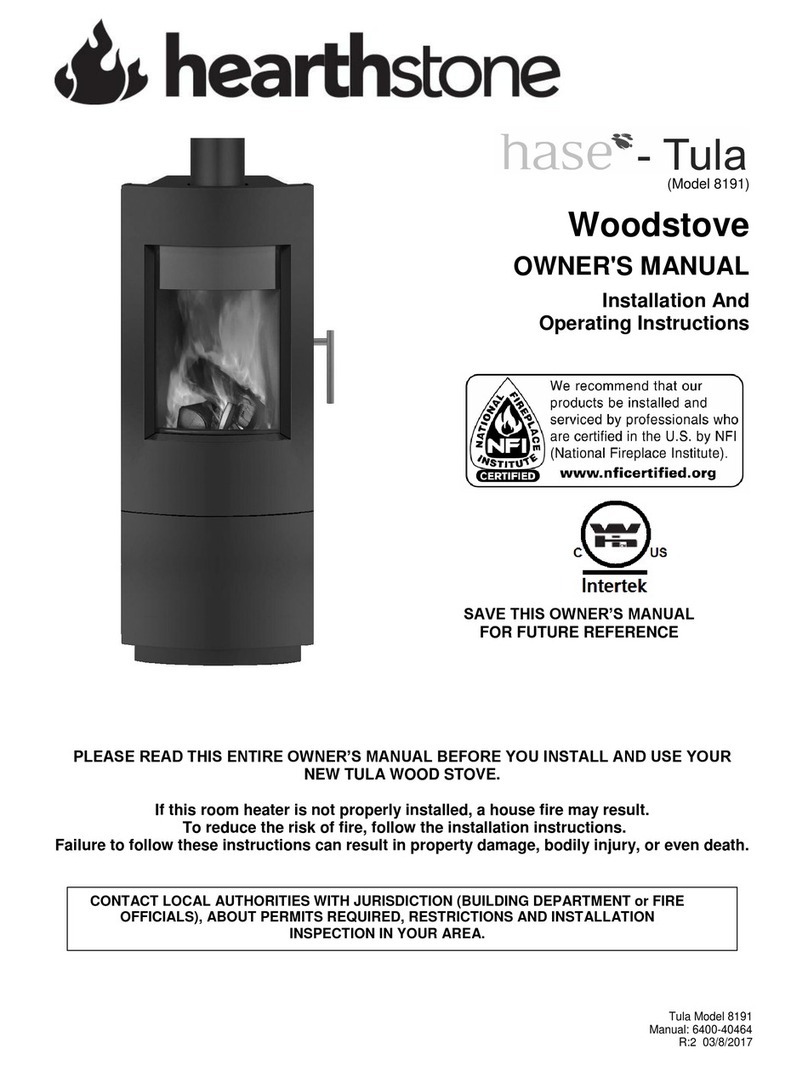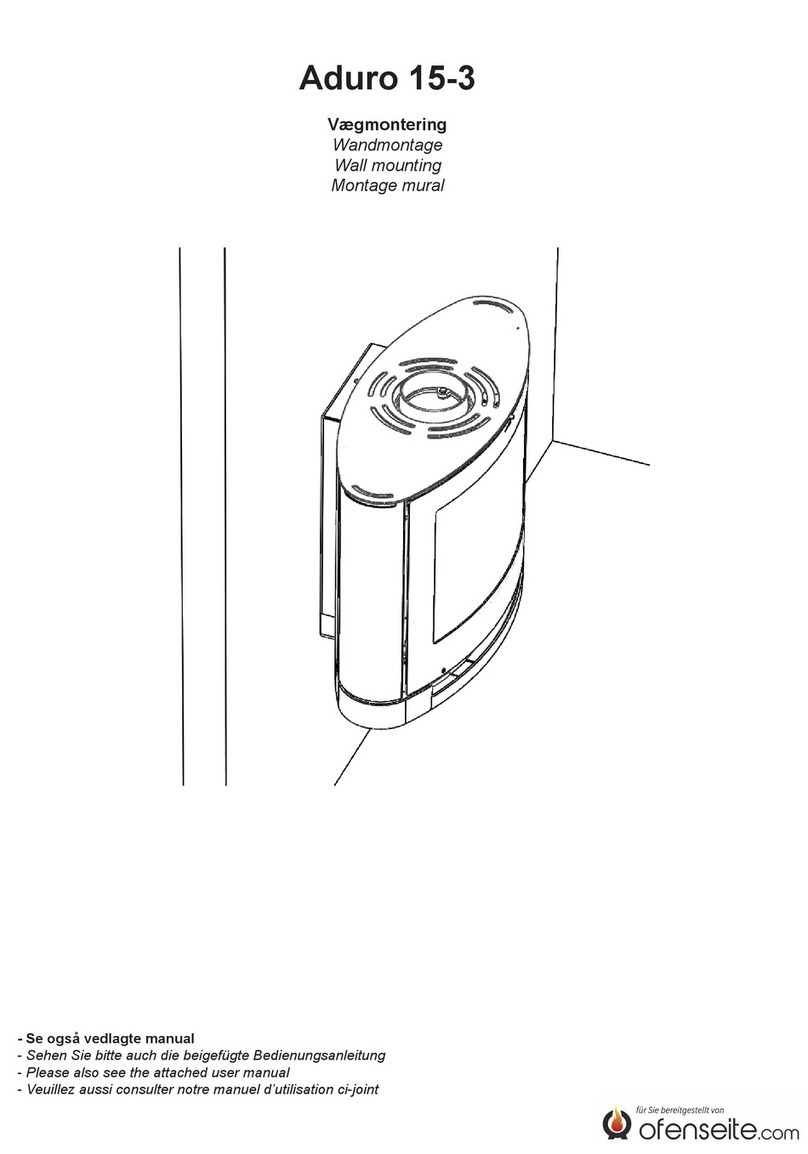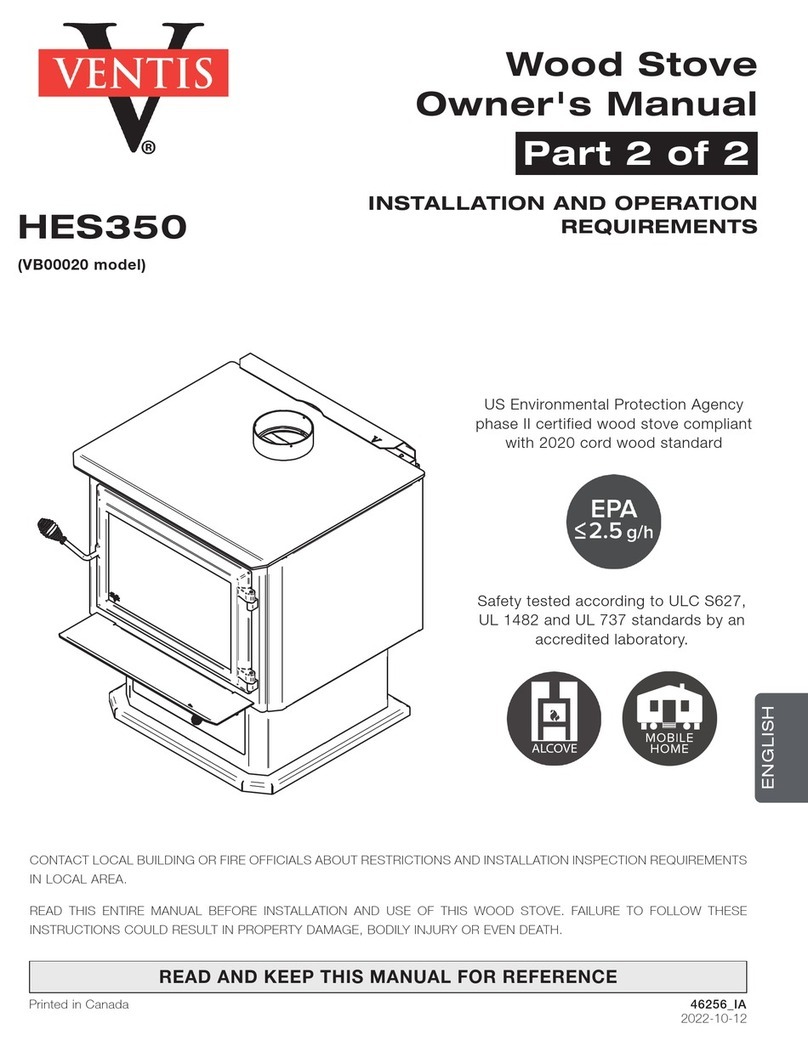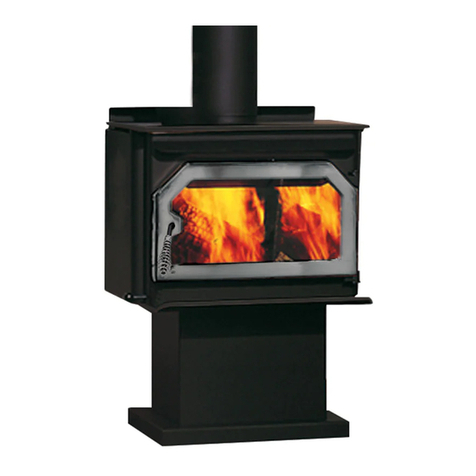
Introduction
Welcome to the Hearthstone family.
You have made an investment in one of the finest
solid fuel heaters available today. To own a
Hearthstone is to make a statement – a statement
that you appreciate exceptional quality and
efficiency in a stove that is backed by the best
warranty in the hearth industry.
Your purchase ensures you of years of clean,
comfortable heat with minimal maintenance. You
will receive the benefits of the most advanced
technology in wood burning without the cost and
maintenance requirements of a catalytic equipped
stove. The Craftsbury blends modern technology
with the time tested beauty of matte or enameled
cast iron. We trust that you will appreciate the value
of our handcrafted product.
Please read this manual in its entirety. Its purpose
is to familiarize you with your stove's safe
installation, proper break-in, operation and
maintenance. It contains information that is useful to
you now and in years to come, so keep it handy and
refer to it as needed.
Use these instructions as well as national, state, and
local building codes to install your stove. Be sure to
maintain the designated stovepipe and stove
clearances to walls, ceilings, hearth, and other
combustible surfaces. This will help reduce the risk
of fire. Failure to follow these instructions can result
in property damage, bodily injury, and even death.
Locate your stove in a safe, convenient, open area;
away from traffic flow, doors, and hallways. At the
same time, keep it as close to the chimney as
possible. Review the proper clearance
measurements from combustible surfaces. You can
safely reduce required clearances in most cases
with the rear heat shield that the stove was tested
with and close clearance pipe, or by following the
NFPA 211 codes. Consult with your local authorities
having jurisdiction.
Keep furniture, drapes, curtains, wood, paper, and
other combustibles far away from the stove. Never
install the stove in a location where gasoline,
kerosene, charcoal lighter fluid or other flammable
liquids are used or stored.
The walls of a Hearthstone stove produce both
radiant and convective heat. Locate the stove
centrally in your living area to allow the heat to travel
naturally to distant rooms. To heat the maximum
area, do not locate your stove in an uninsulated
basement. The amount of energy required to heat
the concrete basement walls is so great that most of
the usable heat is absorbed by the walls and lost.
SAFETY NOTICE:
A HOUSE FIRE MAY RESULT IF THIS
STOVE IS NOT INSTALLED PROPERLY.
FOR YOUR SAFETY, CAREFULLY
FOLLOW THE INSTALLATION
DIRECTIONS. CONTACT LOCAL
BUILDING OR FIRE OFFICIALS ABOUT
RESTRICTIONS AND INSTALLATION
INSPECTION IN YOUR AREA.
The performance of your stove depends on many
variables. Since all installations are unique, the
general information and operating procedures
presented here can only serve as useful guidelines
rather than hard and fast rules. Should you have
any questions, do not hesitate to contact your dealer
for additional information.
Validate your warranty - return your warranty
registration card to Hearthstone. Once you have a
registered warranty, contact your dealer for any
necessary warranty service.
This stove is manufactured and warranted by:
Hearthstone Quality Home Heating Products, Inc.
®
317 Stafford Ave.
Morrisville, VT. 05661
Hearthstone Quality Home Heating Products, Inc. ®Craftsbury Model 8390
4
